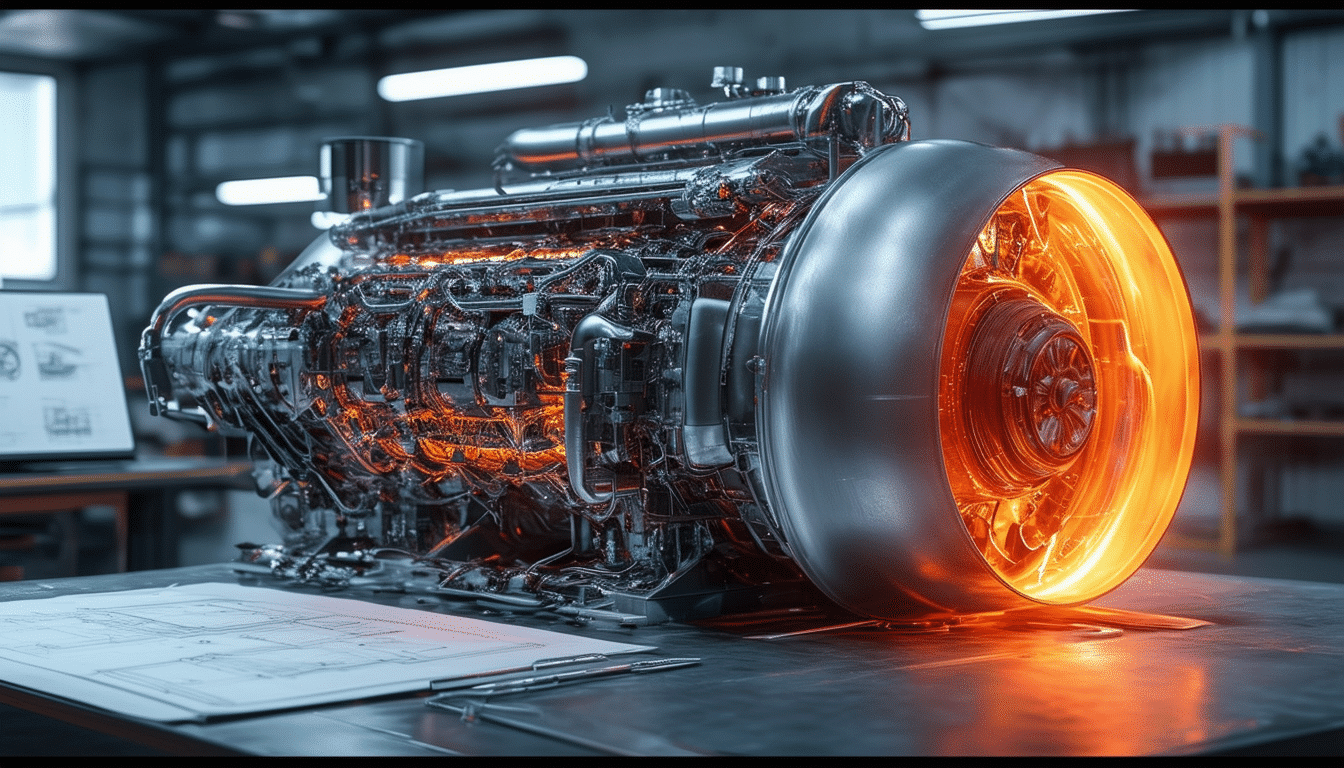A motor that converts its own heat into energy

Imagine an engine that not only powers your vehicle but also harnesses the heat it generates to produce additional energy. Thanks to advanced thermoelectric materials and sophisticated heat exchange systems, this technology promises to revolutionize energy efficiency, providing an extra source of electricity from the engine’s own waste heat.
Innovation in engine technology continues to surprise us. Imagine an engine that not only propels your vehicle but also reuses the heat generated during its operation to produce additional energy. This concept is not science fiction; it is a reality thanks to advanced thermoelectric materials that efficiently convert heat into electricity. In this article, we will explore in detail how this revolutionary technology works, its key components, and the impact it could have on energy efficiency and sustainability.
Thermoelectric Technology: The Key to the Process
Thermoelectricity plays a fundamental role in this innovation. A thermoelectric material is capable of converting heat into electricity due to temperature differences. These materials are composed of elements such as niobium, iron, antimony, and titanium, which, when heated to temperatures above 2000 degrees Celsius, generate an electric current.
Heat Exchanger and Hot Air Machine
The system includes a heat exchanger that maximizes the efficiency of this process. This exchanger is placed in the engine’s exhaust gases, where the waste heat is captured and transferred to a hot air machine. This machinery is responsible for converting thermal energy into additional electrical energy, improving the overall efficiency of the engine.
Applications in the Automotive Industry
The implementation of this technology in the automotive industry could signify a significant advancement in terms of efficiency and sustainability. By recycling the heat generated by internal combustion engines, reliance on fossil fuels is reduced, and the overall performance of the vehicle is improved. This is especially relevant in the current context, where brands are slowing down electrification due to a drop in electric vehicle sales (see the full article).
Environmental Impact and Sustainable Future
The environmental impact of this technology is significant. By improving energy efficiency, greenhouse gas emissions are reduced, and energy waste is minimized. This innovation can be crucial for achieving long-term sustainability goals and for mitigating climate change.
Other Related Advances
In addition to engines that convert their own heat into energy, there are other fascinating advances in the field of automotive technology that we cannot overlook. From more efficient materials to designs that optimize energy consumption, we are witnessing a true revolution in how we understand and utilize energy in transportation.
Considerations for Consumers
As this technology integrates into the market, consumers will need to educate themselves about the benefits and considerations when acquiring vehicles with this type of engine. It is essential to avoid mistakes when financing your new car and to learn the best-kept secrets of vehicles in the Mexican market (read more). Also, in winter driving conditions, it is crucial to be prepared and avoid critical mistakes that could endanger your safety (find out how).
In the realm of eco-friendly innovations, few advances are as promising as engines that convert their own heat into energy. This type of engine not only optimizes energy efficiency but also contributes to emission reduction, a crucial goal in the fight against climate change.
The technology behind these engines is based on the use of thermoelectric materials, which have the capacity to convert heat into electricity. These materials, composed of elements such as niobium, iron, antimony, and titanium, take advantage of the temperature differences generated within the engine to produce additional electrical energy.
Thanks to components like the heat exchanger and the hot air machine, efficient recovery of thermal energy that would normally be lost through the exhaust gases is achieved. This process not only improves the efficiency of the engine but also contributes to the utilization of a source of energy that would otherwise be wasted.
The application of this technology is not limited to vehicles; its potential extends beyond, encompassing different types of cogeneration systems. In such systems, both heat and electricity are produced simultaneously from a single primary energy source. This not only results in optimized energy performance but also minimizes environmental impact.
Moreover, thermoelectric devices can be integrated into various industries, from automotive to energy generation, providing a sustainable and efficient solution for harnessing waste heat. With researchers continuously improving thermoelectric materials and optimizing processes, the future of this technology looks promising.
In summary, an engine that converts its own heat into energy represents a technological revolution with the potential to transform how we manage our energy resources. This innovation not only improves the efficiency and performance of engines but also points towards a more sustainable and environmentally friendly future.





